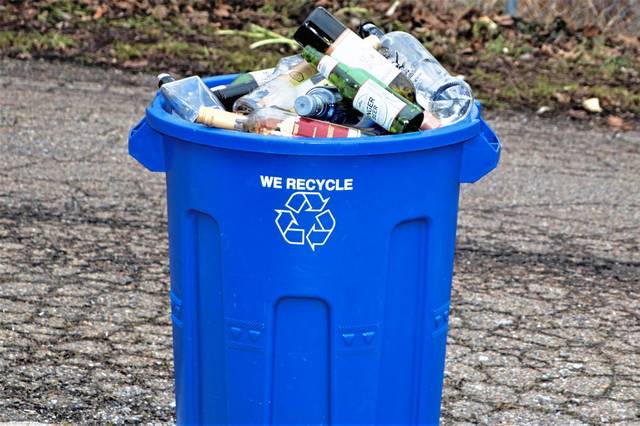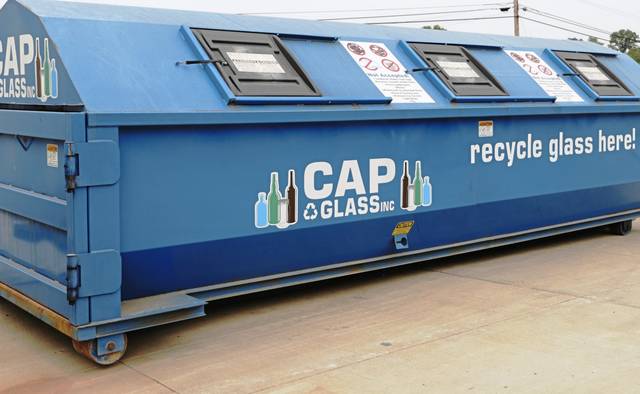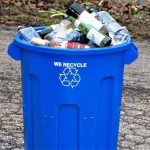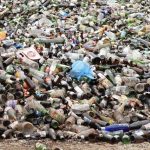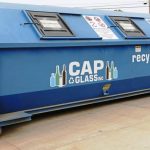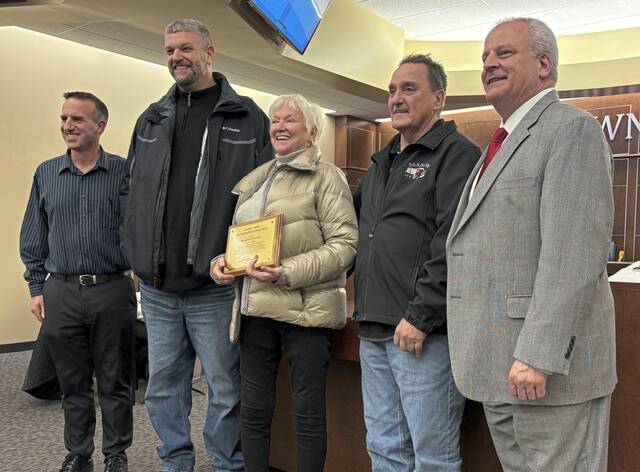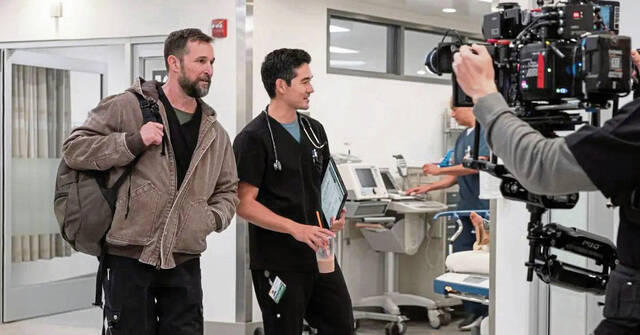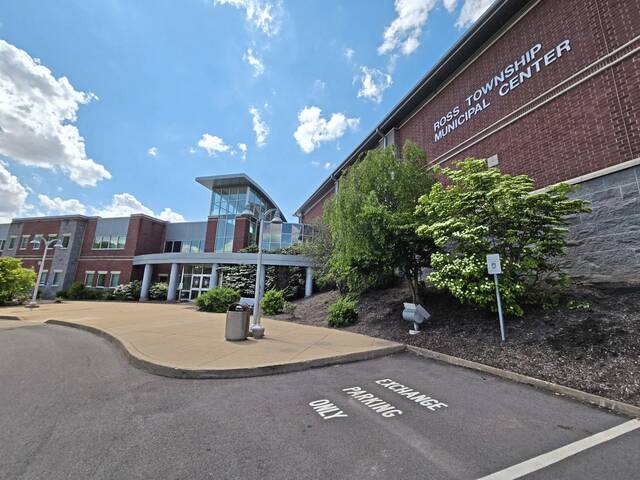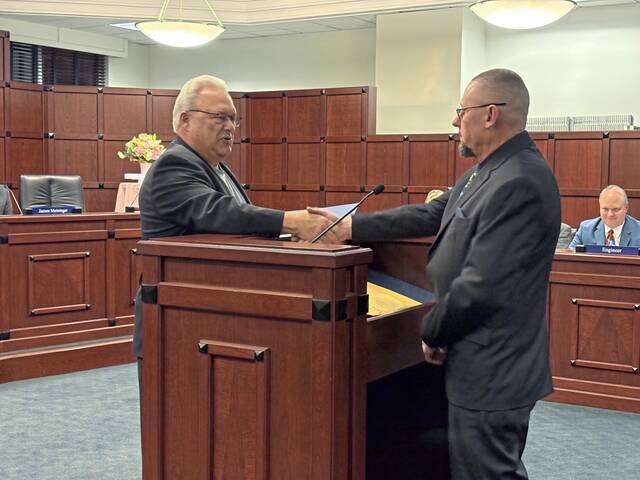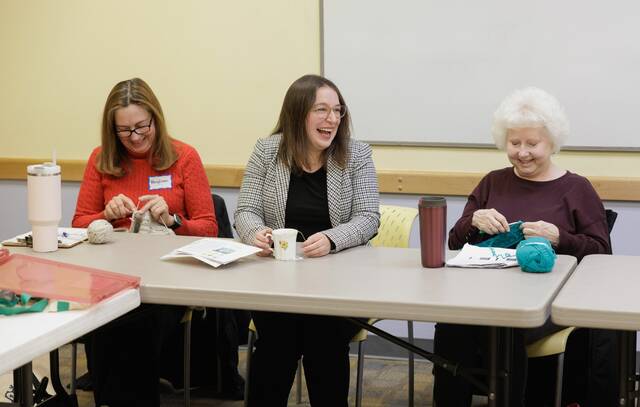The high cost of separating glass from the plastic, paper and cardboard collected at the curb for recycling has helped fuel a near nationwide collapse of the glass-recycling industry, experts say.
Many municipal trash haulers across the country, including companies doing business in western Pennsylvania, are excluding glass from new recycling contracts that use the “singe-stream” method of collection — everything is tossed into one bin and then sorted at the recycling plant.
Glass industry officials and environmental advocates say two factors — efforts to get more people to recycle during the past several decades and a drastic cut in the amount of recyclables China buys — has made single-stream recycling nearly useless for keeping glass out of landfills.
And while the cause of the problem and the road map for the solutions are complex, they agree that the key to getting back on track is simple — glass that’s discarded needs to be treated like treasure instead of trash.
“The market for glass that can be turned into new containers and other products is still very strong and it’s still important from an environmental perspective to keep glass and other items that can be recycled out of landfills,” said Ashley DiGregorio of the Pennsylvania Resource Council, which is working across the state to fill the gap left by the widespread loss of curbside glass recycling.
Recycling cuts greenhouse gas emissions because making goods from recycled materials typically requires less energy than making items from virgin materials, according to the U.S. Environmental Protection Agency. Energy costs also drop by 2% to 3% when 10% of recycled glass is used to make new products.
Recycling also reduces emissions from incinerators and cuts the amount of methane gas released from landfills.
A ton of natural resources is saved for every ton of glass that is recycled, according to the EPA.
A self-inflicted wound
In the years since recycling became mandatory in Pennsylvania in 1988, many municipalities have tried to increase the amount of material being recycled by making it simpler for their residents to participate by using the single-stream model instead of separate bins for glass, plastic and paper.
But over time, single-stream has made glass nearly worthless for trash haulers, who must cover the cost of separating it before it can be sent off to a plant to be recycled.
“The process of removing glass from single-stream recycling is a bit like unscrambling an egg,” DiGregorio said. “The workers and equipment needed to do it are costly and definitely has an impact on the ability to continue to reuse those materials.”
Mixing glass in with other material also can taint the entire batch if it breaks, which means it all ends up in a landfill instead of getting recycled. Waste haulers say the broken glass damages the conveyor belts and there is no cost-effective way to remove broken glass from a pile of recyclables — workers have to sift through the pile and pick it out by hand.
Glass industry officials say getting to know your glass can go a long way toward ensuring it gets recycled instead of buried.
“Today, consumers are still faced with frequent – and significant – changes to their local recycling programs,” said James V. Nordmeyer, vice president of global sustainability at Owens-Illinois, a major U.S. glass recycler. “It remains challenging to determine what materials truly belong in the bin.
“This confusion results in a combination of consumers recycling what they hope they can and another contingency of consumers avoiding recycling completely,” he said.
Nordmeyer said trying to recycle items without knowing if they are actually usable, or wishcycling, “results in smaller volumes of scrap with increased levels of contamination, and challenges the overall recycling system and glass production infrastructure.”
The only type of glass that should be recycled is the kind used to make food and beverage bottles, jars and jugs, according to the Glass Packaging Institute.
For many years, single-stream recycling wasn’t a problem for the U.S. because it was not a problem for China, whose expanding manufacturing sector made it the biggest customer for the glass, plastic and other recyclables exported from the U.S.
But that changed in 2017 when China announced that it was reducing the amount of contamination it would accept in the recycling material it buys from 20% to 0.5%.
The country also cited the rising cost of labor to process the material as well as the abundance of its own waste that could be recycled.
DiGregorio said China’s willingness to accept so much contamination in the recyclable material it bought resulted in a low-quality product from the U.S.
“One of the biggest impacts that single-stream recycling has created is an environment in which businesses in the U.S. that need high-quality glass are unable to get it,” she said.
Single-stream recycling also has impacted a waste hauler’s ability to sell paper that can be reused by mills in North America, which also need it to be separated by color and grade before it can be recycled into new products.
Professor Nicole Bieak Kreidler of La Roche University in McCandless thinks a change in attitude about the waste that is created could solve some of recycling’s woes.
“When we purchase something, most of us don’t think about what will happen to it at the end of its life cycle or when we no longer need it,” she said. “We need to expand the idea of what ownership means.”
Kreidler agrees that recyclable items need to be viewed as something of value rather than waste to be discarded.
“We live in a very shielded society,” she said. “We don’t see the landfills, so it’s out of sight, out of mind. But people need to understand that their waste has an impact.”
Kreidler said the “circular” approach to the life cycle of products has already been ingrained in much of Europe’s population, where recycling rates are significantly higher than in the U.S.
The average glass recycling rate for the 28 countries in the European Union was 76% in 2018, according to the European Container Glass Federation.
In the U.S., only 3.1 million tons, or 31.3% of the 12.3 tons of glass produced in 2018 was recycled, according to the EPA.
Road map for the future
While removing glass from commingled recyclables may be like unscrambling an egg, changing back to a multi-stream recycling system might be like trying to put a genie back in its bottle.
“It’s unlikely that single-stream is going to go away,” DiGregorio said. “But there are multiple solutions that communities can advocate for.”
She said expanding the infrastructure of places where glass can be dropped off can immediately correct the problems created by single-stream recycling.
“When it’s all mixed together, you really don’t know if the glass will really ever get recycled,” she said. “But when it’s dropped off, you know that 100% of it is going to be turned into something new.”
While companies may no longer be in a position to pay for the glass that’s collected, they might be willing to furnish the receptacles a community needs to set up a glass recycling station and cover the cost of transporting the collected material to a facility for processing, she said.
Communities can also organize volunteers — or pay people if they can afford it — to pick glass up from residents who want to participate but can’t drop it off.
Advocating for things such as bottle tax to fund proper recycling infrastructure or paying a little more to have glass collected separately also can be viewed as an investment rather than a burden, she said, noting that nearly all the glass that is properly collected in the region is used by companies within 150 miles of Pittsburgh.
“Creating a system that provides high-quality glass can have a huge economic impact,” DiGregorio said. “It would benefit a significant number of businesses and the people they employee in our region.”
Traveling glass recycling bin coming to Findlay, Hampton
Residents who no longer have glass picked up at the curb as part of their municipality’s recycling program can make sure it stays out of a landfill by dropping it off at a week-long glass collection event in Hampton.
The Pennsylvania Resource Council traveling glass recycling bin will be set up at the Findlay Township public works garage at 1058 Clinton Road from Jan. 16 to 21.
Between Jan. 30 and Feb. 4, glass bottles, jars and jugs of all colors also can be dropped off at the Hampton Swimming Pool parking lot at 3101 McCully Road.
The collection event is open to residents of any community that does not offer curbside glass recycling as well as people who want to ensure the glass they discard is recycled instead of being sent to a landfill.
Glass containers should be empty and rinsed with the lids and labels left on. Bags and boxes used to transport the glass must be discarded off-site.
The traveling recycling bin program is conducted by the Pennsylvania Resource Council with sponsorship from Owens-Illinois and CAP Glass, which uses the glass to make new bottles, jars and other products.
PRC sponsored recycling events collected 540,000 pounds of bottles, jars and jugs for recycling in 2020.
More information about glass recycling events is available online or by calling PRC at 412-488-7490.


